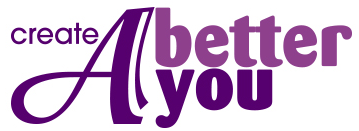This Year I Resolve to… Hmmm
By
John McGrail, Ph.D.
Almost all of us have “stuff” in our lives we’d like to change. We want to be happier, healthier, attract more abundance, have better relationships, build self confidence, feel more joyful, be less stressed, and have more fun. And along about now, just before almost every New Years, most if not almost all of us start thinking about actually doing something about it.
With the New Year comes a clean slate, and thus it’s a time for resolutions, those wonderful promises we make to ourselves, and—deep sigh here— hardly everkeep. In fact, failure to keep resolutions has become so cliché, we often make a joke of it all— at least publicly. In truth, most of us feel really disappointed when we fail yet again. Blowing our resolutions, life changes that we know will improve our lives, only serves to make us feel worse about ourselves than we did to begin with. Ever wonder why?
Charles Bernard Shaw once said, “Progress is impossible without change; those who cannot change their minds cannot change anything.” And therein lays a big clue to the real reason most people fail to follow through on perfectly good resolutions. It has nothing to do with personal weakness or lack of willpower. It’s mostly because the human mind has evolved in a way that makes Mr. Shaw’s very good advice veryhard to follow—we are all of us naturally resistant to change; any change, even when we want it and know it would be good for us. It’s a state of mind called homeostasis, which is Latin for “same state.”
Change, any change, represents the unknown, and to our subconscious mind—the part of our mind from which most of our attitudes, habits and behaviors arise, the part that “runs the show” most of the time—“unknown” represents “fear” and “pain.” Any organism, and maybe especially the human organism, will always choose pleasure over pain.
Pleasure in this instance need not be pleasurable, just familiar. And so when consciously trying to force a new change— through willpower—becomes too much, too “scary” and “painful,” for the subconscious, it takes over and we “slip” and gradually or sometimes instantly revert to our old familiar patterns, habits and behaviors, back into the same old rut—another set of excellent resolutions down the drain.
Have you had enough? Can the resistance of homeostasis be overcome? Can we make resolutions and actually make them stick? In a word, YES! And here are some simple tips that will help you—consciously and subconsciously—do just that.
- Your resolutions must be something you want for you, and not made for someone else’s benefit. If you resolve to change yourself because someone else wants you to or thinks it would be good for you to do, you might as well forget it. Whose life is it anyway?
- Commit to yourself. The required conscious attitude goes something like, I will do whatever it takes to make this happen, I will let nothing stop me because I want this and I am worth it. (Say this to yourself over and over and over!)
- Embrace the change as a process—and it is always a process. One of the big mistakes people make is to look at the end of the process, see everything they think is entailed to get there and poof, they become overwhelmed with it all. You cannot climb a mountain in a single bound; you must take it a step at a time.
- You must go about the process with love, honor, and respect for yourself or you have no chance. Make yourself the most important person in the world; love yourself completely. This is not vanity or egoism; it’s you treating you the way you wish to be treated by others.
- You must bring intention and expectation to the party and use these conscious energies to bolster your desire and commitment. The more you intend—laser-sharp focused thought and action—to have what you want, and the more you expect it, the faster it comes to pass. (If you don’t expect success, then don’t expect success.)
- You must work with your subconscious mind; again, the subconscious mind is much more powerful than the conscious; it is the seat of most behaviors, habits, emotions, etc, and therefore must be addressed in order to have your changes (resolutions) stick. A great way to begin this is to simply take about 10-15 minutes a day to sit quietly and picture, visualize or imagine yourself having finished, having totally succeeded. Stay with the image of the “new you” until you actually feel the delight, excitement and satisfaction you know success will bring. Then hang onto that feeling as you go about your day making choices that bring you there, step by step. This is a simple but powerful form of self hypnosis. When you imagine anything, you are speaking to the subconscious mind in its own language—images.
- If you need a little help, get it!
That last tip is really important. Realize and accept that homeostasis (a largely subconscious process) is a very powerful force. Most people—about 98% of us—will need a little assistance in working through their homeostasis, especially if the unwanted or unhealthy attitude, habit or behavior is deeply engrained. So, you might think of working together with a resolution buddy so you can support and encourage one another. And if that isn’t enough consider working with a professional like a hypnotherapist or life coach, someone trained and with the tools to help people overcome the inborn resistance to change we all experience.
If you really want to succeed and you get the assistance you need to change your mind, you will really understand what old Charley B. Shaw meant, and you will likely be a very happy camper. Happy New Year!



